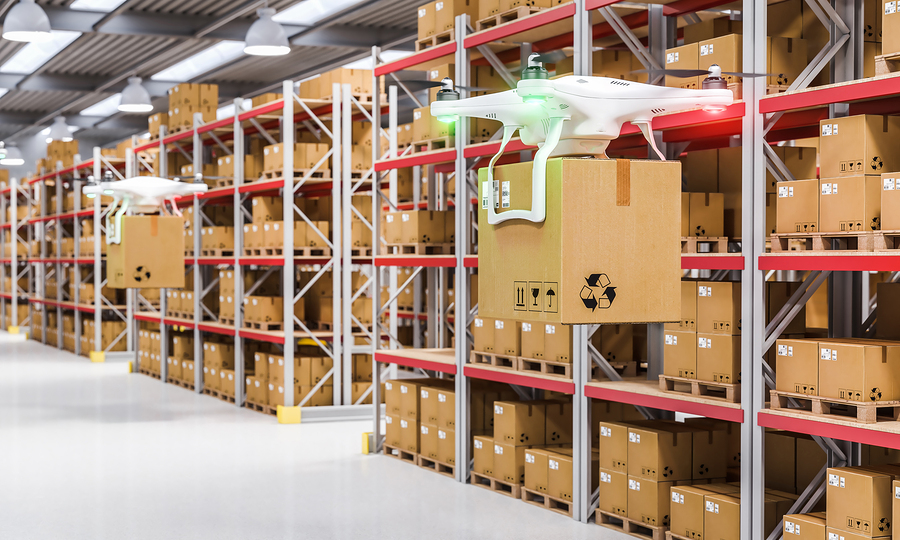We live in a world now where two-day shipping is a regular occurrence. Shoppers can convince themselves to pass up the immediate gratification of getting something that day in a brick and mortar store if waiting two days means they don’t have to get off the couch and go out in public.
Fast shipping isn’t just a result of speed; it’s also logistics. Amazon, the pioneer of regular two-day shipping, has 175 fulfillment centers around the world with more than 150 million square feet of space for products. This is considerably more than the average number of warehouses a supply chain has.
As retail footprints shrink in favor of online shopping, warehouses must adapt to this new future of retail. Over the next few months, we’ll take a look at some of the ways your warehouses can prepare for the future now.
Driving Change From the Supply Chain
With online shopping slowly encroaching on the lion’s share of retail business for many areas, warehouses and supply chains will need to switch tactics for stocking and fulfillment, from stocking shelves with bulk order sends to individual boxes direct to customers. Many warehouses are still relying on manual processes because traditional hardware and software solutions have only been accessible for larger companies. However, sticking with manual processes leads to errors and inefficient workflows.
As more and more retail moves online, retailers will be looking for warehouse and supply chain partners that can meet the quick turnaround needs of direct shipping. This new shifting environment is what’s driving the bulk of the change to transform warehouses for the future. Let’s dig into some specifics.
New Trends in Logistics
Integration is the name of the game when it comes to any new trend in logistics. These new integration trends should be at the top of your list as you plan for the future.
- Automated Capacity Management: Capacity management itself is not new. It’s what makes sure your old inventory gets moved out and doesn’t take up valuable space for newer or faster moving products. Moving this to an automated sphere will use technology to provide data-driven capacity planning and management, reducing errors, lost revenue, and wasted space.
- On-Demand Warehousing: New shifts in retail demand the ability to accommodate capacity demands that may be long term or very temporary. With on-demand warehousing, supply chains that find themselves with extra storage space can essentially rent it out to warehouses that are bursting at the seams during a peak season. The ebb and flow of spatial needs benefits both parties and allows retailers to continue meeting customer demand, no matter the scale.
- Automation as a Service: You’ve heard of SaaS (software as a service), but automation as a service might be a newer term. This fast-growing business model lets customers deploy automation on an as-needed basis. For companies just exploring automation for the first time to those who know they only need it certain months of the year and don’t have the budget to fully own, automation as a service provides easy access to technology without the full-time investment.
- Connect Through APIs: APIs, or application programming interfaces, are what make it easier for the average tech user to develop and work in the systems they have purchased. Rather than spend money on developers and programmers, systems are now created to be more user-friendly with APIs that programmatically interact with a separate software component or resource. APIs can function in the warehouse and supply chain by collecting data from disparate systems to integrate technology for a more complete view of the business.
Move Into the Future With ASI
This is just a first taste of what warehouses of the future will need to succeed, and what you can do today to build the foundation for that success. Adopting new technology isn’t always easy, but the good news is that you don’t have to do it alone. Accounting Systems, Inc. has proven success finding the right business software solutions to prepare organizations for the future, from small to mid-sized to enterprise-level. We’ll work with you to uncover your top critical requirements and find the solution that meets your needs today and prepares you for the future.
Find out how easy preparing for your future could be. Contact ASI’s team of software experts today for a free consultation.

